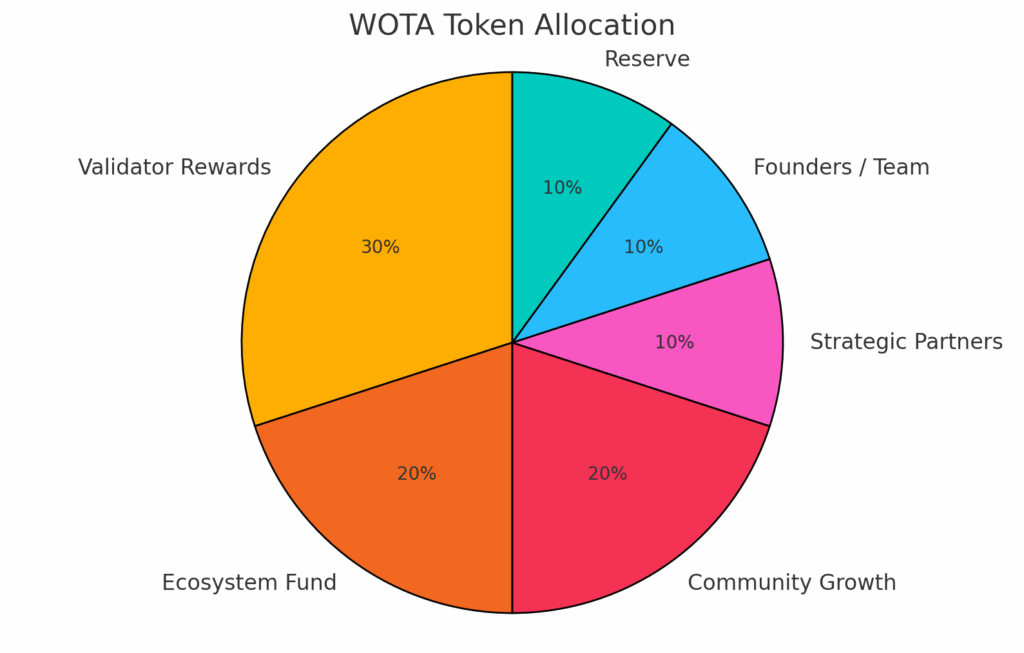WOTA Staking Process
1. Validator Staking
Users can stake WOTA to run or support validators on the OTR network. These validators handle:
- Proof of Relay (verifying content was transmitted)
- Proof of Authentication (confirming trusted device activity)
- CID logging (broadcasting content hashes securely)
Staking WOTA in this context allows you to earn rewards based on:
- Relay uptime
- Bandwidth contributed
- Number and quality of signed CIDs
2. Hardware-Aware Staking
Unlike many Web3 projects, WOTA staking extends to physical infrastructure — validators can be Raspberry Pi nodes, SDR-enabled devices, or offline-capable units. Staking is performance-based, not just time-based.
3. Reward Distribution
- Validators earn WOTA through automated reward cycles tied to on-chain logs and verifiable relay events.
- A portion of rewards is burned or cycled back into the validator pool to limit inflation.
- Non-custodial: Users retain wallet control while staking via validator interfaces (e.g., Edge Wallet plugin, Thetis SDR interface, or Pi dashboards).
4. No Central Custodian or Intermediary
WOTA staking does not rely on custodial or staking-as-a-service providers. It is designed to meet compliance standards by avoiding pooled passive income models commonly flagged by regulators.

